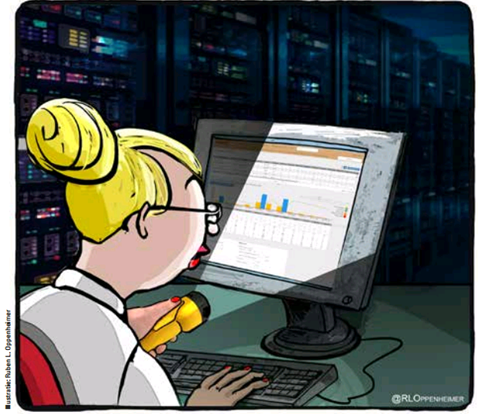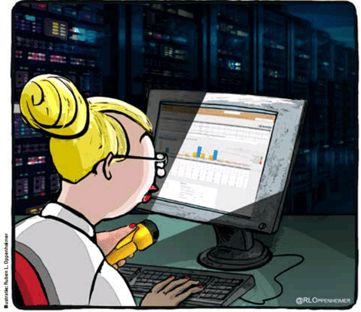Planning in the twilight

Numerous articles have been published recently on the topics of no-touch planning and lights-out planning. The first thought that comes to my mind is whether planning requiring no intervention at all is indeed possible… and my second thought is whether that is desirable.
Possible?
Personally, I don’t think it’s possible to fully automate the planning process. The brilliant 2018 book called Prediction Machines by Agrawal, Gans and Goldfarb includes an interesting (theoretical) explanation of the automation of decision-making. Put very simply, it’s about data-predictions-decisions. An algorithm analyses the data to make a prediction which leads to a decision. A prime example of full automation is the self-driving car, of course. The car itself needs to make the decisions; it won’t work if the driver has to intervene at critical moments. In the case of the autonomous vehicle, it’s critical for the margin of error to be zero (… can you imagine a scenario in which it would be 1%? Probably best not to….).
In order to achieve this, the data-predictions-decision process must be a closed ecosystem. That’s the only way to progress from level 2 (‘hands-off’) to level 4 (‘brain-off’, i.e. back-seat driver) or level 5 (‘fully autonomous’). Let’s apply this to the practical situation of the monthly S&OP cycle: is it a closed ecosystem, and if not can we turn it into one? Is all the master data 100% accurate? Do we really think that we can make all the information available to all the salespeople, customers, factories, suppliers, carriers and so in, in such a way as to create a closed ecosystem?
Desirable?
There will be plenty of arguments supporting the view that automated planning is indeed possible – and rightly so. After all, the technological advancements in recent years have proven many IT sceptics wrong. For the sake of argument, let’s assume that it could be possible. That still leaves us with the question of whether it is desirable.
First of all, are we willing to pay the huge costs involved in creating a closed ecosystem? Is the investment worth it? Which companies can actually afford it? And what benefits will it bring? A second and more important question in this context relates to the role we envisage for humans. Imagine, for example, that we embark on a project and outsource our planning activities. Are we prepared to lose those people and their expertise? How vulnerable will we be without our own planning knowledge? Who is ultimately responsible? Who can we hold accountable for our planning? If there’s
a stock-out, will we ask the customer to take it up with the algorithm?
Who wants it?
What kind of companies are behind this search for the Holy Grail of fully automated planning? On the one hand, the major driving forces are software vendors who are eager to sell their advanced tools, and on the other they are consultants who are keen to help in terms of providing implementation support or assisting customers in already outsourcing their planning activities. The trump card in this case is fear – the fear that you don’t have or can’t find the right people for your planning activities (and the labour shortage is indeed a real problem). There is also the fear of failing to keep pace with the technological changes. However, fear is never a good counsellor…
I am a firm believer in utilizing and benefiting from technology. It’s the only way to survive. So perhaps it’s fair to assume that it will become possible at some point. The crux of the matter is whether it is desirable. In my view, technology is a tool (and a tool can be a hammer or a quantum computer), but tools don’t dictate what happens to the human race. That’s in our own hands.
People in charge
The fundamental assumption must be that people are – and will remain – in charge. We then need to ask ourselves what the technology can do for us. How can we use it? The full potential is still beyond the realms of our imagination, but we – human beings – are at the wheel. We decide how fast, how far and where we want to go. My biggest fear is that populist terms such as no-touch planning and lightsout planning will lead to the wrong decisions based on unrealistic expectations. Can we make huge progress using the technology of today (and tomorrow)? Definitely. But don’t turn out all the lights just yet, because once it’s dark you might discover that you no longer know where you are or which direction to take. It’s no problem to dim the lights, but leave a soft twilight so that you can still see where you are and where you’re heading…




